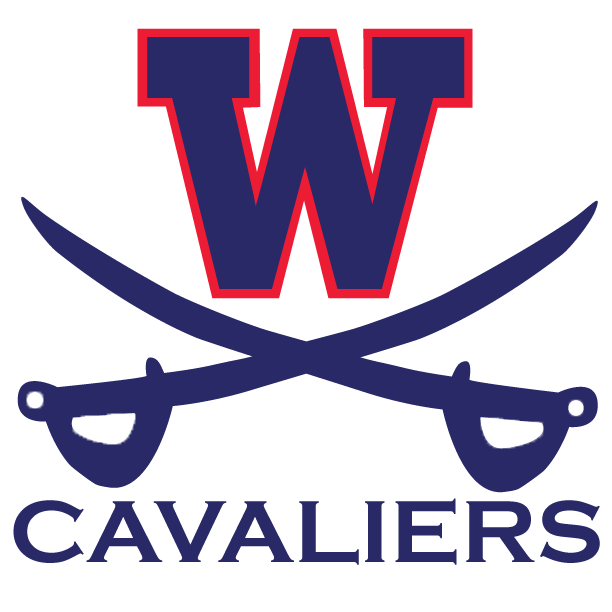Woodson in the 1960's
Woodson High School was originally named The W. T. Woodson High School in honor of a former superintendent of Fairfax County Public Schools. When Woodson opened its doors to students for the first time in the fall of 1962, it was not only the largest school in Fairfax County, but it was also the largest in the state of Virginia. The Woodson campus consists of a seventy-nine-acre tract of land that was an operating dairy farm until the school was built. The size of the site was, and remains, the largest school campus in Fairfax County. Two farm buildings remain: the white house known as "Woodson House" and the one-time dairy barn still used by the county maintenance department. The original cost of building Woodson was $3,300,000, a bargain by today’s standards.
A unique feature of the new high school was a full planetarium of both the northern and southern hemispheres. Students from elementary and middle schools continue to visit the Woodson planetarium as part of their science curriculum. A vocational wing housed a program drawing students from all over the county for classes in auto mechanics, cosmetology, carpentry, veterinary science, and electricity. The vocational programs were gradually phased out over the years and students interested in such classes now attend Chantilly Academy, a professional technical center located at Chantilly High School. The original athletic facilities included two softball fields, a practice field, two baseball fields, a hockey field, a 5,000-seat stadium, and ten tennis courts. The stadium now seats 15,000. The budget for the new school did not include money for stadium lighting. The entire community joined in a fund-raising plan called "The Light Brigade." Local businesses contributed so generously that for at least fifteen years Woodson school activities did not solicit funds from the Fairfax business establishment. Patrick J. Cunningham, the first Director of Athletics at WTW, led this massive fund-generating campaign. Within a year, the stadium was lighted. The stadium is now named the Patrick J. Cunningham Stadium. In 1962, the main gymnasium was considered huge, with a capacity of 1,400. In addition to the main gym, there was an auxiliary gym, then called "The Girl's Gym," and a "corrective exercise gym." During the 1998-99 school year, the gymnasium was named in honor of Paul "Red" Jenkins, a health and physical education teacher who coached basketball at WTW for thirty-five years. The auditorium, the largest in Northern Virginia at that time, had a capacity for 1,200. The auditorium is now called Bedinger Auditorium for long-time drama teacher Joan Bedinger.
Woodson High School originally opened its doors to 1,800 Cavaliers. By the 1965-66 school year, enrollment reached 3,300, including 150 minority students brought to Woodson as a result of the integration of schools. The first principal of Woodson High School was Mr. Emory Chesley. Mr. Chesley handpicked the faculty for Woodson, luring away from other Fairfax County schools some of their most talented teachers. He sought diversity, ability, and strength of character. Not only did Mr. Chesley recruit Fairfax County teachers, he also hired teachers who had been teaching at places such as Duke University, the University of South Carolina, and Johns Hopkins University, in addition to a number of retiring military officers. With his dedicated Cavalier staff and enthusiastic students, Mr. Chesley established a school tradition of academic excellence, competitive spirit, and school pride that still exists today. After just one year, Woodson grew by 1,000 students, and, in 1964, Mr. Chesley proudly held the first commencement exercises for Woodson students in the stadium.
In 1965, Mr. Chesley left Woodson, and the assistant principal for instruction, Mr. Robert Phipps, assumed the role of principal. He held this position until his promotion to Assistant Superintendent of Schools in 1968. At that time, Woodson’s third principal, Mr. William P. Ladson, took command. Mr. Phipps returned to the principal’s position at Woodson in 1972 and remained there until his retirement in 1981. Many may remember "Hall Duty" from the early years when a group of boys, known as "The Cavalier Corps," maintained order in the halls. Chosen for their leadership ability and their reputation for high character, the boys wore blue Cavalier sweaters as they kept order in the hallways. Others may remember the lunch shifts beginning with a member of the Student Government ringing a chime to signal the students to stand to repeat in unison an ecumenical grace. Those days are long gone and a loud bell now signals the beginning of the four lunch shifts. Grace is no longer part of the Woodson day, but the 1998-99 school year brought the return of the Pledge of Allegiance, now said at the beginning of morning announcements.
The 1960’s saw a dramatic change in the student body at Woodson. As the population rose, so did the hemlines. Mini-skirts came into fashion, as did longer hair on the boys. This caused quite a stir in the school community as questions arose over just how short was "too short" and how long was "too long." The faculty had to deal with girls with shrinking skirts and boys with hair beyond collars. Parent and teacher groups met to make a decision about whether to allow boys to wear collarless shirts called "surfer shirts." The dress code mandated that boys wear shirts with collars that were tucked into trousers worn with a belt. Girls were required to wear dresses or skirts - no slacks. A couple of big events occupied students during this early era. One athletic highlight of the 1960s was Woodson’s championship basketball team, which made it all the way to the state semi-finals in 1966. In addition, the community united with students and faculty groups in 1963-64 to oppose the building of the Tank Farm that now exists on Pickett Road.

